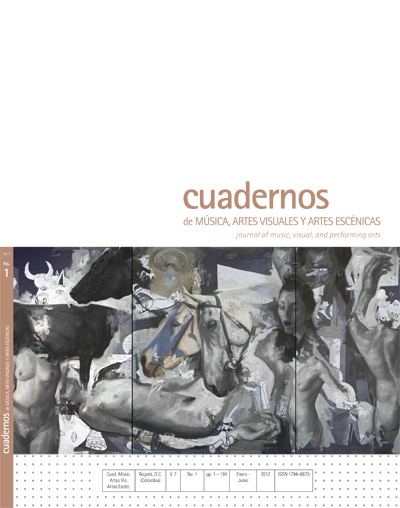Abstract
El presente artículo propone una inmersión en el espectáculo operístico ruso de finales de siglo, con especial atención a los teatros privados de ópera –en particular, la Ópera privada de Mamontov–,el lugar donde la clase intelectual tuvo por primera vez una forma de expresión libre al margen de los aparatos del poder. La filosofía estética de estos grupos se expresa mediante la “unión de las artes”, que se alcanza mediante la interacción de escenografía y música, núcleos entorno a los que se desarrollará el análisis de esta exposición. Una simbiosis que dará lugar a obras en las que se diluyen los límites de la realidad tangible para explorar mundos de evasión desconocidos para el espectador ruso y el europeo.This journal is registered under a Creative Commons Attribution 4.0 International Public License. Thus, this work may be reproduced, distributed, and publicly shared in digital format, as long as the names of the authors and Pontificia Universidad Javeriana are acknowledged. Others are allowed to quote, adapt, transform, auto-archive, republish, and create based on this material, for any purpose, provided the authorship is duly acknowledged, a link to the original work is provided, and it is specified if changes have been made. Pontificia Universidad Javeriana does not hold the rights of published works and the authors are solely responsible for the contents of their works; they keep the moral, intellectual, privacy, and publicity rights.
Approving the intervention of the work (review, copy-editing, translation, layout) and the following outreach, are granted through an use license and not through an assignment of rights. This means the journal and Pontificia Universidad Javeriana cannot be held responsible for any ethical malpractice by the authors. As a consequence of the protection granted by the use license, the journal is able to publish retractions or to correct information already published. Publishing contents in this journal does not generate royalties for contributors.


